Discover the breathtaking beauty of Bhutan with Amen Bhutan Tours and Treks as we guide you through the Top 7 Valleys to visit in Bhutan. From the iconic Paro Valley, home to the majestic Tiger's Nest Monastery, to the serene and lush Gangtey Valley, each destination offers a unique blend of natural beauty, spiritual significance, and rich culture. Whether you're drawn to the spiritual heart of Bumthang or the vibrant Thimphu Valley attractions, our tailored itineraries ensure you experience the best of Bhutan valley tourism. Join us to explore these must-see valleys and immerse yourself in the unparalleled serenity and cultural depth of Bhutan's most scenic valleys.
At Amen Bhutan Tours and Treks, we pride ourselves on being the premier tour operator for exploring the Top 7 Valleys to visit in Bhutan. Our deep understanding of Bhutan’s unique landscapes and cultural fabric allows us to offer unparalleled tours tailored to showcase the majestic beauty of valleys like Paro, Thimphu, Punakha, Phobjikha, Bumthang, Haa, and Gangtey. Each itinerary is carefully crafted to ensure that our guests not only visit but truly experience the spiritual, natural, and cultural treasures of these regions. With Amen Bhutan Tours and Treks, you're not just taking a tour; you're embarking on a journey deep into the heart of Bhutan, guided by experts who are passionate about bringing you the most authentic and memorable Bhutanese experiences.
Paro Valley
Paro Valley is one of Bhutan’s most enchanting regions, serving as both a cultural heartland and a scenic gateway. The valley is home to some of Bhutan’s oldest temples and monasteries, as well as its only international airport, making it a fitting introduction to this majestic country.
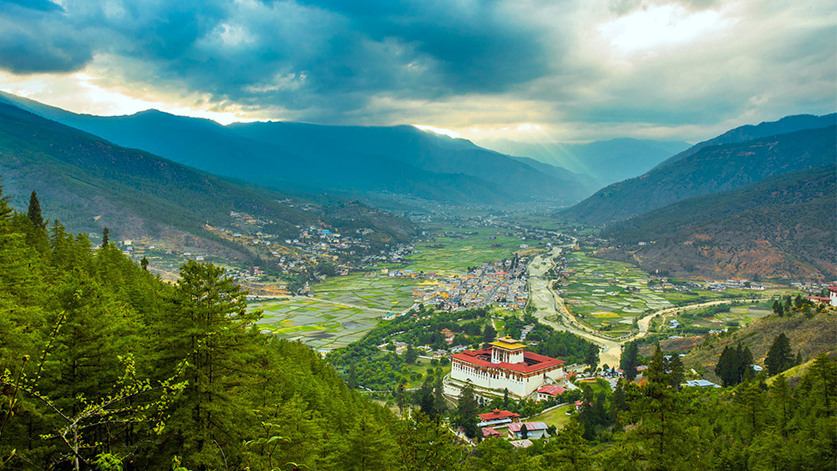
Highlights of Paro Valley
- Tiger's Nest Monastery (Taktsang Lhakhang): Perched dramatically on a cliffside about 900 meters above the Paro valley floor, Tiger's Nest is the most iconic landmark of Bhutan. A site of pilgrimage and a beacon of heritage, it offers breathtaking views and a glimpse into the spiritual devotion of the Bhutanese people.
- Rinpung Dzong:: Known as the "Fortress on a Heap of Jewels," this large dzong is an excellent example of Bhutanese architecture and a vital religious and administrative center. It houses the district Monastic Body and government administrative offices of Paro Dzongkhag.
- Paro Town: A charming town with traditional architecture and quaint shops. The main street, built in traditional Bhutanese style, offers various handicrafts and local goods, making it a great place for tourists to shop for souvenirs.
- National Museum of Bhutan: Housed in the ancient Ta Dzong watchtower, the museum is a treasure trove of Bhutanese art, artifacts, and relics, offering insights into Bhutan’s rich cultural and historical heritage.
- Kyichu Lhakhang: One of the oldest temples in Bhutan, dating back to the 7th century. It is one of the 108 temples built by the Tibetan King Songtsen Gampo to subdue a demoness lying across the Himalayas.
- Drukgyel Dzong: This dzong, now in ruins, was historically important as a defense fortress against Tibetan invasions. It offers an evocative sense of history and remarkable views of Mt. Jomolhari on clear days.
- Paro Tshechu: Held annually in the spring, this is one of the most colorful and significant events in Paro. The festival is marked by dances performed by trained monks and laymen in elaborate costumes and masks, celebrating Bhutan’s rich cultural traditions.
Paro Valley offers a blend of natural beauty, deep-rooted spirituality, and a vivid peek into the kingdom's storied past, making it a must-visit destination for any traveler to Bhutan.
Thimphu Valley
Thimphu Valley stands as the modern capital of Bhutan, uniquely characterized by its blend of traditional Bhutanese culture with the conveniences of modern life. As the seat of government and the royal family, Thimphu pulses with political, economic, and cultural activity, making it a dynamic center of Bhutanese life.
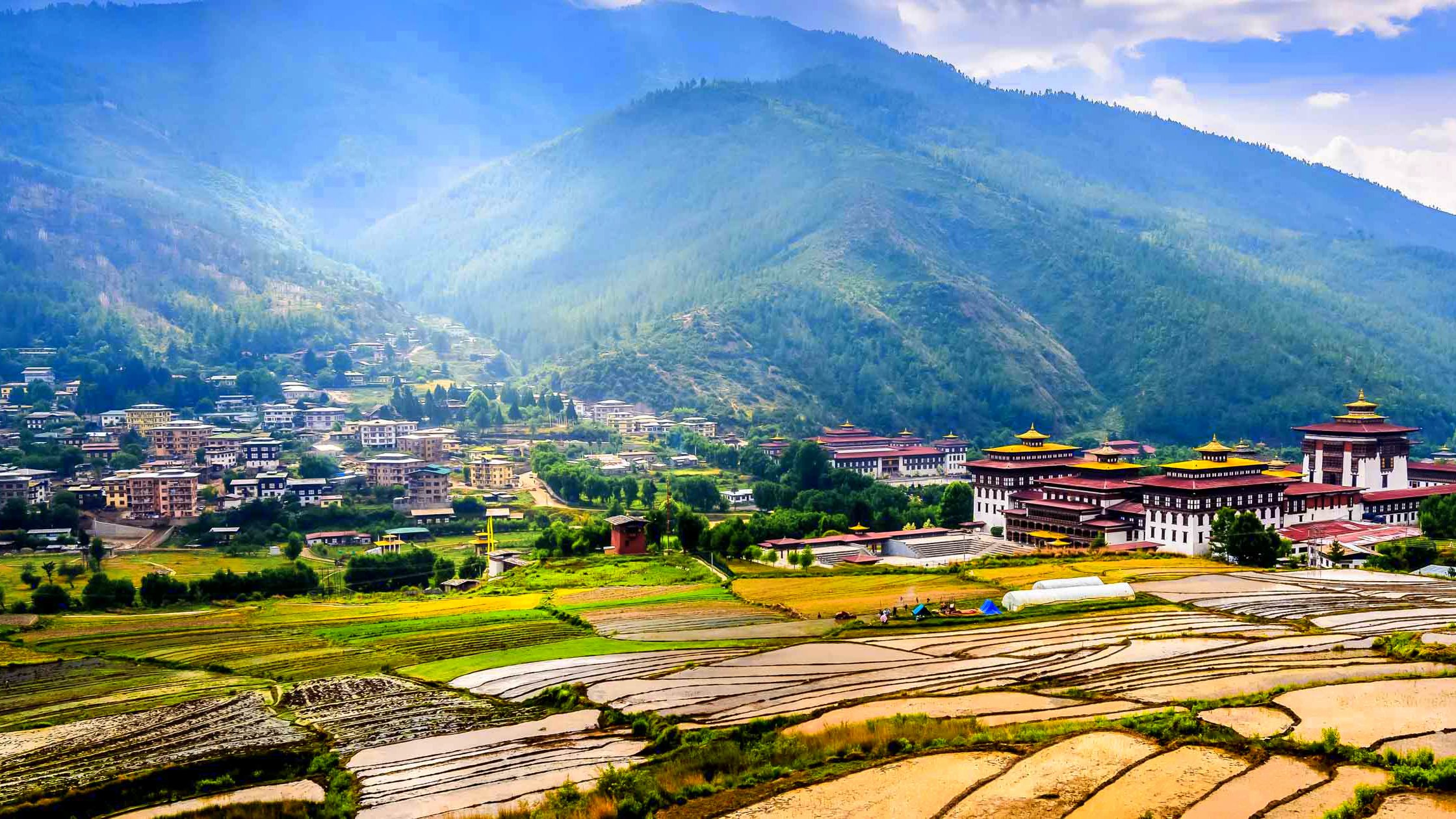
Highlights of Thimphu Valley
- Tashichho Dzong: This impressive fortress is not only the main administrative center but also the summer residence of the central monastic body. The Dzong’s grand architecture and strategic location on the banks of the Wang Chhu river make it a standout landmark in Thimphu.
- Buddha Dordenma Statue: Overlooking the valley from atop a hill in Kuenselphodrang Nature Park, this gigantic, 51-meter tall statue of Buddha made of bronze and gilded in gold is one of the largest Buddha statues in the world, symbolizing the prominence of Buddhism in Bhutan.
- National Memorial Chorten: This stupa, built in memory of the third Bhutanese king, serves as a focus for daily religious life in Thimphu. It is one of the most visible religious structures in Thimphu and a center for the annual ritual ceremonies.
- Folk Heritage Museum: This museum offers a glimpse into traditional Bhutanese life through exhibits of household objects, tools, and equipment, providing a contrast to the rapidly modernizing lifestyle in Bhutan.
- Motithang Takin Preserve: Home to the takin, Bhutan’s national animal, this unique wildlife reserve is dedicated to the conservation of this rare and unusual species. The preserve offers visitors a chance to see these animals in a natural setting.
- Thimphu Weekend Market: A bustling hub of activity, the market is filled with vendors selling everything from fresh produce and meats to handicrafts and textiles. It’s an excellent place to interact with locals and experience the vibrant everyday life of Bhutan.
- Thimphu Tshechu Festival: One of the biggest festivals in the country, this annual event held at Tashichho Dzong features days of religious celebrations, including mask dances and other cultural performances that draw thousands of locals and tourists alike.
Thimphu Valley provides a perfect mix of old and new, where ancient traditions flourish alongside modern developments, offering visitors a comprehensive experience of Bhutan’s past, present, and future.
Punakha Valley
Punakha Valley, once the capital of Bhutan, continues to be a significant cultural and religious center. Nestled between the Pho Chhu and Mo Chhu rivers, this fertile valley boasts a milder climate than much of Bhutan, making it a lush and vibrant region year-round.

Highlights of Punakha Valley
- Punakha Dzong: Known as the 'Palace of Great Happiness,' this majestic dzong is arguably the most beautiful in Bhutan, strategically located at the confluence of the Pho and Mo Chhu rivers. It serves as a winter residence for the central monastic body and houses many sacred relics.
- Suspension Bridge: Stretching over the Po Chhu, this is one of the longest suspension bridges in Bhutan, offering picturesque views of the river and valley. It provides a thrilling experience as you walk over the river with stunning views of the surrounding mountains and fields.
- Chimi Lhakhang: Situated on a small hilltop, this iconic temple is dedicated to Lama Drukpa Kunley, also known as the 'Divine Madman.' It is a revered site known for its fertility blessings, attracting couples from across Bhutan and beyond.
- Khamsum Yulley Namgyal Chorten: This chorten stands out for its elaborate and intricate religious paintings and offers one of the best panoramic views of the valley. Built as a symbol of peace and stability, it is a fine example of Bhutanese architectural and artistic traditions.
- Ritsha Village: Often called a 'model' Bhutanese village, Ritsha is famous for its traditional mud houses and agricultural practices, particularly rice farming, which align with the valley’s natural beauty and cultural heritage.
- Punakha Tshechu: This annual festival held in the Dzong is one of the biggest religious celebrations in Bhutan, featuring mask dances and historical re-enactments, bringing to life the rich culture and traditions of the Bhutanese people.
Punakha Valley embodies the essence of Bhutanese spirit and tradition, offering visitors a deeper connection with the country's past and present through its stunning landscapes and significant historical sites.
Phobjikha Valley
Phobjikha Valley, also known as Gangtey Valley after the village and monastery at its heart, is a stunning glacial valley on the western slopes of the Black Mountains. Renowned for its tranquil scenery and as a conservation area for the black-necked cranes, this valley offers a blend of natural beauty and biodiversity that is unmatched in Bhutan.
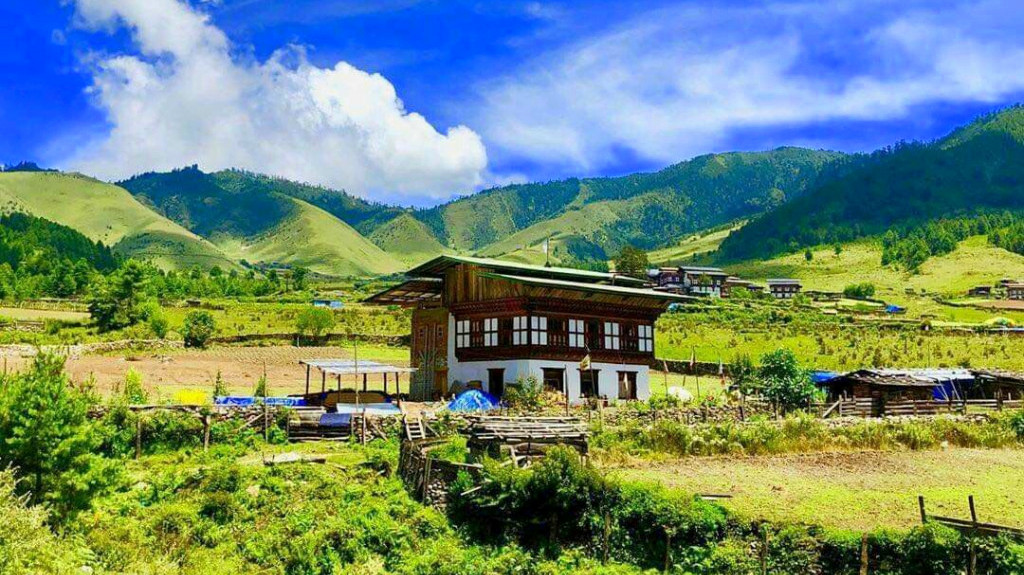
Highlights of Phobjikha Valley
- Gangtey Monastery: Overlooking the valley, the Gangtey Monastery is an important religious site for the Nyingmapa school of Buddhism and provides spiritual sustenance to the region. The monastery complex hosts the annual Black-Necked Crane Festival, celebrating the arrival of the cranes.
- Black-Necked Crane Information Centre: Dedicated to conserving the vulnerable black-necked cranes that migrate here in winter, the centre offers insights into the cranes and local environmental efforts. Visitors can enjoy watching these elegant birds through high-powered telescopes and learn about the valley’s ecosystem.
- Nature Trails: Phobjikha Valley is crisscrossed with scenic trails perfect for hiking. These trails offer sweeping views of the valley’s wetlands and forests, and a quiet encounter with the region’s flora and fauna, providing a peaceful retreat into nature.
- Black-Necked Crane Festival: Held annually in November, this festival is a colorful celebration of the crane’s winter arrival and features cultural dances, local music, and costumes, creating a festive atmosphere around the monastery.
- Photography and Bird Watching: The valley’s wide expanse and the presence of rare wildlife make it an ideal spot for photography and bird watching, especially during the early morning or late afternoon when the light is most magical.
- Village Life: Explore the local villages dotting the valley to see traditional Bhutanese farmhouses and experience the daily life of the farmers. The valley is particularly known for its potatoes, which are considered some of the best in Bhutan.
Phobjikha Valley is a must-visit for nature lovers and those seeking a serene escape, offering a unique blend of spiritual, cultural, and natural attractions set against the backdrop of one of Bhutan’s most beautiful landscapes.
Bumthang Valley
Bumthang Valley is often described as the spiritual heart of the kingdom, encompassing four major valleys: Chokhor, Tang, Ura, and Chhume. Rich in historical and religious significance, Bumthang hosts some of Bhutan's oldest and most revered temples and monasteries, making it a focal point for pilgrimages and spiritual studies.
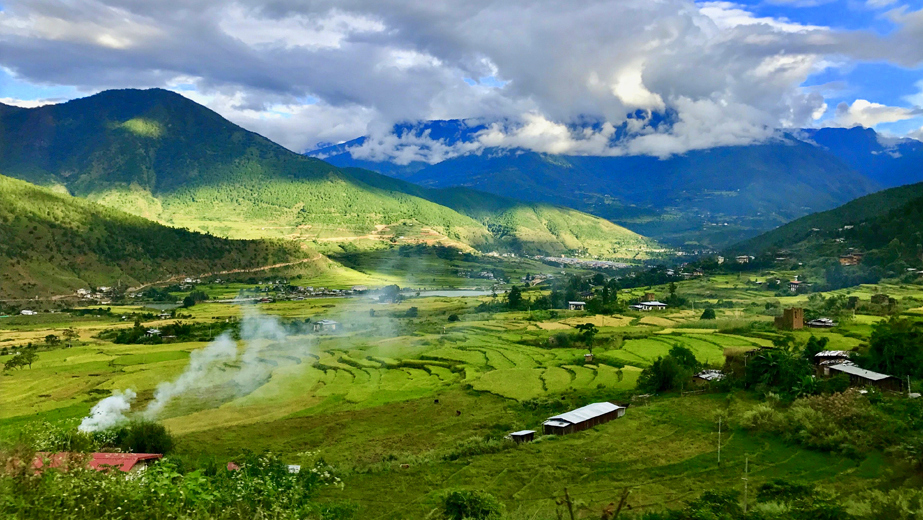
Highlights of Bumthang Valley
- Jambay Lhakhang: One of the oldest temples in the kingdom, Jambay Lhakhang was founded by the Tibetan King Songtsen Gampo in the 7th century. It is one of 108 temples built across the Himalayas to subdue a demoness and is a key site for the annual Jambay Lhakhang Drup festival, featuring the sacred naked dance.
- Kurjey Lhakhang: This large monastery complex contains three temples and is named after the body imprint of Guru Rinpoche that is said to be preserved in a rock here. It is a site of great historical and spiritual significance in Bhutan.
- Tamshing Lhakhang: Founded in 1501 by Pema Lingpa, one of the most important Nyingma saints in Bhutanese history, Tamshing Lhakhang houses some of the oldest wall paintings and religious artifacts in Bhutan.
- Jakar Dzong: Also known as the "Castle of the White Bird," Jakar Dzong is strategically located on a ridge above Jakar town. The dzong serves as the administrative center of the valley and offers stunning views of the surrounding area.
- The Burning Lake (Mebar Tsho): This sacred lake is where Pema Lingpa discovered several of Guru Rinpoche’s hidden treasures. The site is revered as a pilgrimage spot and is surrounded by stories and legends, adding a mystical aura to its natural beauty.
- Bumthang Cultural Trek: This trek connects the important historical and religious sites across the valley, offering trekkers a unique blend of Bumthang’s cultural heritage and natural scenery.
- Ura Valley: The highest of Bumthang’s valleys, Ura is known for its quaint village and cobblestone streets, providing a glimpse into the traditional Bhutanese way of life. The annual Ura Yakchoe festival is a highlight, featuring dances and cultural performances.
Bumthang Valley not only offers a journey through the spiritual landscape of Bhutan but also allows visitors to immerse themselves in the rich tapestry of myths, legends, and history that shape the Bhutanese identity.
Haa Valley
Haa Valley, one of the least visited and most pristine areas in Bhutan, offers a tranquil escape into the country's natural wonders and traditional lifestyle. Nestled in the northwestern part of Bhutan, Haa is bordered by the districts of Paro, Chhukha, and Samtse, making it a secluded yet accessible destination for those looking to explore off the beaten path.
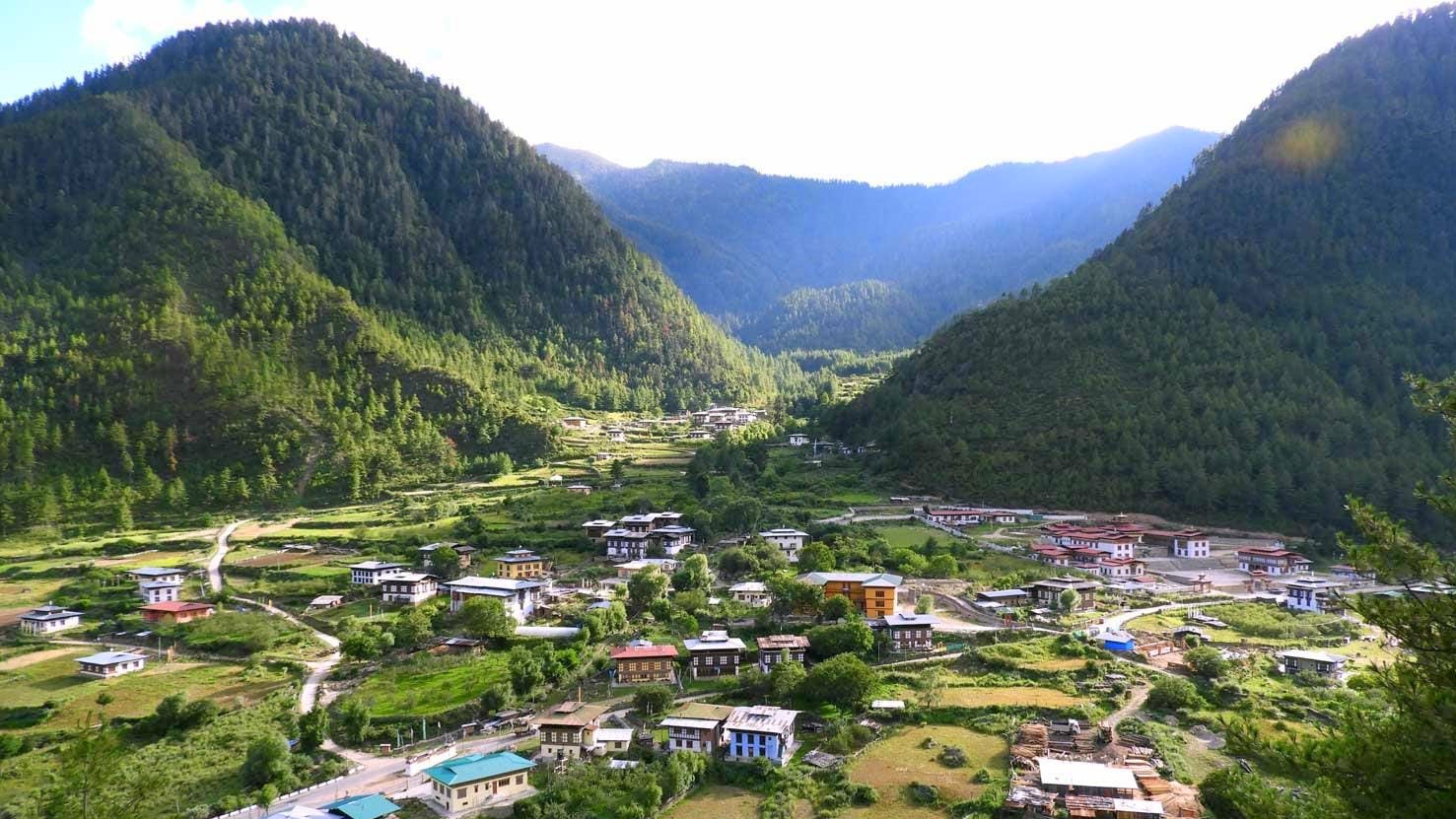
Highlights of Haa Valley
- Haa Summer Festival: Dive into the local culture at the Haa Summer Festival. This vibrant event showcases traditional living, native cuisine, and Bhutanese music, as well as sports like archery and yak riding, providing a deep insight into the traditional lifestyle of the nomadic herders.
- Lhakhang Karpo and Lhakhang Nagpo: Often referred to as the White and Black Temples, these two ancient shrines are among the 108 monasteries that were miraculously constructed by Tibetan King Songtsen Gampo in a single night. The temples are a testament to the deep spiritual roots and historical significance of the valley.
- Tagchu Goemba: This 100-year-old hermitage offers a peaceful retreat and is known for its religious significance and beautiful murals. It’s a perfect spot for meditation or contemplation amidst serene surroundings.
- Hiking and Trekking: Haa Valley offers numerous trails that range from relaxing riverside walks to rigorous treks. The serene landscape, filled with lush forests and alpine meadows, makes it ideal for both novice hikers and seasoned trekkers.
- Dobji Dzong: Located approximately a half-hour drive from Haa town, this 16th-century fortress serves as a Buddhist monastery and is strategically perched on a hilltop offering panoramic views of the valley.
- Traditional Farmhouses: Experience traditional Bhutanese life by visiting or even staying in one of the valley’s traditional farmhouses. Many families open their homes to visitors, offering a unique chance to live like a local and enjoy authentic Bhutanese hospitality.
- Cycling and Mountain Biking: The valley's relatively flat terrain interspersed with gentle hills provides excellent opportunities for cycling and mountain biking, offering another way to enjoy the stunning landscapes at a leisurely pace.
Haa Valley remains one of Bhutan’s hidden treasures, offering tranquility, natural beauty, and a deep sense of peace. It’s an ideal destination for those looking to explore the quieter side of Bhutanese life and enjoy nature away from the more tourist-trodden paths.
Gangtey Valley
Gangtey Valley, located in the beautiful Phobjikha Valley in central Bhutan, is renowned for its vast wetlands and stunning landscapes. This serene valley is not only a top destination for nature lovers but also a vital habitat for the endangered black-necked cranes that migrate here during the winter months.

Highlights of Gangtey Valley
- Gangtey Monastery: Overlooking the valley, Gangtey Monastery, or Gangteng Gonpa, is a significant Nyingma monastery in Bhutan. It offers spiritual sustenance to the region and is an architectural wonder, providing visitors with insight into the religious practices that are central to Bhutanese culture.
- Black-necked Crane Information Centre: The centre is dedicated to the conservation of the black-necked cranes that winter in the valley. Visitors can learn about the cranes and their migration patterns, and use the center’s spotting scopes to watch these graceful birds in their natural habitat.
- Nature Trails: Gangtey Valley is crisscrossed with scenic trails perfect for hiking. These trails offer breathtaking views of the valley’s wetlands and rolling hills, and a chance to experience the tranquility of this untouched natural landscape.
- Gangtey Tshechu: This local festival is held annually at Gangtey Monastery and features mask dances and cultural performances by the monks. It provides a unique opportunity to witness spiritual and communal celebrations that are deeply rooted in the local tradition.
- Phobjikha Valley: Often used interchangeably with Gangtey, Phobjikha is a vast glacial valley and an important wildlife preserve. The area is known for its beautiful walking paths and the stunning views of the surrounding mountains.
- Homestays and Eco-lodges: Staying in a homestay or an eco-lodge in Gangtey is an excellent way to immerse yourself in the local culture and lifestyle. These accommodations offer a close-up experience of rural Bhutanese life and traditional hospitality.
- Valley Photography: Gangtey Valley, with its wide and open landscapes, dramatic skies, and traditional farmhouses, is a paradise for photographers looking to capture the essence of Bhutan’s natural beauty.
Gangtey Valley offers a peaceful retreat into nature, with its rich biodiversity and cultural significance making it a must-visit for anyone traveling to Bhutan. Whether you are a nature enthusiast, a spiritual seeker, or simply in need of a tranquil escape, Gangtey provides a memorable and enriching experience.
Best Time to Visit Top 7 Valleys in Bhutan
When planning a visit to Bhutan's top valleys, considering the seasonal variations is essential to making the most of your trip. Here’s a guide to the best times to visit these regions based on the seasons:
- Spring (March to May): Spring is a vibrant season across Bhutan, making it one of the best times to visit the valleys. The weather is pleasantly warm, and the valleys are alive with blooming flowers. This season offers clear views of the majestic Himalayas and is ideal for photography, trekking, and attending festivals like the Paro Tshechu.
- Summer (June to August): Summer in Bhutan is the monsoon season, which can bring heavy rains and occasional landslides. However, this period also transforms the landscape into a lush green paradise, especially in the valleys like Haa and Bumthang. Visiting during this time means fewer tourists and a chance to see the valleys in their most verdant state.
- Autumn (September to November): Autumn is arguably the best season to visit Bhutan’s valleys due to the excellent weather conditions—mild temperatures and minimal rainfall. The clear skies provide spectacular views of the mountains. It's also a great time for trekking and witnessing some of the most significant festivals, including the Thimphu Tshechu and Black-Necked Crane Festival in Gangtey.
- Winter (December to February): Winter is cold, but it offers a unique charm as snow blankets the higher elevations, and the air is crisp and clear. This season is perfect for visiting the Phobjikha Valley to observe the endangered black-necked cranes. Winter also tends to be quieter in terms of tourism, providing a more peaceful travel experience.
By selecting the right season for your interests, whether it’s participating in cultural festivals, enjoying nature hikes, or wildlife viewing, you can enhance your journey through Bhutan’s enchanting valleys.
Travel Tips
When planning a trip to explore the enchanting valleys of Bhutan, it's important to consider several travel tips to ensure a smooth and enjoyable experience. Here are some essential travel tips:
- Plan with a Licensed Tour Operator: Bhutan requires all tourists (except citizens of India, Bangladesh, and the Maldives) to travel with a licensed Bhutanese tour operator or through an international partner. This ensures that your itinerary, accommodations, transport, and guide services are arranged to meet the country's tourism and environmental standards.
- Visa and Travel Formalities:Ensure you apply for your visa well in advance through your tour operator, as you cannot obtain a visa on arrival. The visa fee is typically included in your tour package. Always carry a copy of your visa clearance letter, as you will need to show it upon entering Bhutan.
- Understand the Minimum Daily Package Rate: Bhutan has a unique tourism policy where foreign tourists must pay a minimum daily package rate. This rate covers accommodation, food, transport, and services of a guide. It also includes a sustainable tourism royalty that goes towards free education, healthcare, and poverty alleviation.
- Pack Appropriately: The weather in Bhutan can vary significantly between regions and seasons. Pack layers to accommodate varying temperatures, especially if you plan to visit multiple valleys. Include good walking shoes or hiking boots, a waterproof jacket, sun protection (hat, sunglasses, sunscreen), and essential medications.
- Cultural Sensitivity: Bhutan is deeply traditional. Dress modestly, especially when visiting religious sites (no shorts or sleeveless tops). Always ask permission before taking photographs of people or religious ceremonies. Show respect by removing your shoes before entering temples and monasteries.
- Health Precautions: Altitude sickness can be a concern, especially in higher regions like the trekking routes in Bumthang or Haa. Acclimatize properly and stay hydrated. Consider bringing altitude sickness medication if prone to altitude issues.
- Stay Connected: While major towns have reliable mobile and internet connectivity, remote valleys might have limited service. Prepare for periods without connectivity, especially when trekking or visiting secluded areas.
- Currency and Payments: The Bhutanese Ngultrum (BTN) is the local currency, pegged to the Indian Rupee which is also accepted. Credit cards are gaining acceptance in hotels and shops in urban centers but carry cash when traveling to more remote areas.
- Travel Insurance: It's advisable to have comprehensive travel insurance that covers medical evacuation, as medical facilities in Bhutan are basic, especially outside of major cities.
- Enjoy Local Cuisine: Embrace Bhutanese dining, which can be spicy. Try local dishes like Ema Datshi (chili and cheese) and Red Rice. Inform your guide about dietary restrictions or allergies in advance.
By following these tips, you can ensure a respectful, enjoyable, and enriching visit to Bhutan's stunning valleys, making the most of this unique travel destination.
Exploring the Top 7 Valleys to visit in Bhutan offers an enchanting glimpse into the heart and soul of this majestic kingdom. From the iconic Tiger's Nest perched in the dramatic Paro Valley to the serene and wildlife-rich Phobjikha Valley, each valley presents its unique blend of natural beauty, deep-rooted spirituality, and vibrant culture. Whether you are trekking through the historic sites of Bumthang, experiencing the vibrant festivals of Thimphu, or seeking tranquility in the hidden Haa Valley, Bhutan's valleys promise a journey of discovery and awe. With Amen Bhutan Tours and Treks, travelers can immerse themselves in these mesmerizing landscapes, each telling its own story of the Bhutanese heritage that continues to thrive in the modern world.
FAQs of the Top 7 Valleys to visit in Bhutan
Q: What is the best time to visit the valleys in Bhutan?
A: The best time to visit most valleys in Bhutan is during the spring (March to May) and autumn (September to November) seasons when the weather is mild and the skies are clear. However, if you wish to see the black-necked cranes in Phobjikha Valley, winter (November to early March) is ideal.
Q: Are there any special permits required to visit these valleys?
A: Visitors to Bhutan need a Bhutanese visa and must travel with a licensed Bhutanese tour operator. The tour price generally includes all necessary permits. Specific restricted areas might require additional permits, which your tour operator will arrange.
Q: How accessible are these valleys for tourists?
A: Most valleys like Paro, Thimphu, and Punakha are easily accessible by road from the major entry points in Bhutan. More remote valleys like Haa and Phobjikha may require longer drives on winding mountain roads.
Q: What kind of accommodations can be expected in these valleys?
A: Accommodations range from luxury hotels and resorts to modest guesthouses and homestays, depending on the valley. Paro, Thimphu, and Punakha offer more upscale options, while Gangtey, Bumthang, and Haa have eco-lodges and comfortable family-run guesthouses that offer a more authentic experience.
Q: Can I visit all these valleys in one trip to Bhutan?
A: Yes, it's possible to visit all these valleys in a single trip if you have enough time. A well-planned itinerary by Amen Bhutan Tours and Treks usually spans at least 10 to 14 days to cover these destinations comfortably.
Q: What should I pack for a trip to the valleys in Bhutan?
A: Essential items include warm clothing (especially for evening and night), comfortable walking shoes, a rain jacket, a hat, sunscreen, and personal medications. Also, consider bringing a camera, binoculars for wildlife viewing, and an extra memory card.
Q: Are there any cultural tips I should be aware of when visiting Bhutan’s valleys?
A: Bhutanese culture is deeply respectful and conservative. Dress modestly, especially when visiting religious sites. Always ask for permission before taking photos of people or religious ceremonies. Be mindful of local customs and traditions to show respect to your hosts.
Q: What are some activities I can do in these valleys?
A: Activities vary by valley, including hiking, bird watching, participating in local festivals, visiting historic dzongs and monasteries, and engaging in community-based tourism experiences like farm stays and traditional crafts.
If you are looking for tour packages in Bhutan please click here
If you need any further information, please contact us, Email: at [email protected] , Phone (Whatsapp or Viber) +975-1755-6636
